The balanced scorecard (BSC) is a tool that organizations have used for many years to measure strategic, operational and financial performance. The concept behind the BSC is simple: a company and/or business unit prioritizes a set of 15 to 20 financial and non-financial metrics across four quadrants linked to the company’s market and operations strategy in order to measure and manage performance. While the BSC is a good organizing framework and remains relevant today, it needs a major shift to be effective in a Software-as-a-Service (SaaS) world where traditional BSC measures don’t adequately gauge and predict performance.
SaaS companies have a constant window into how customers use their products as well as an opportunity to gain insight and add value at continuous customer touch points. When harnessed correctly, this knowledge can be used to form close, profitable and predictable long-term customer relationships.
Introducing the subscription scorecard
To better address the dynamics of a subscription / SaaS business model, the BSC needs to be “rebalanced” with customer success at the center driving financial value. In turn, innovation and operations measures are reoriented around driving customer success.
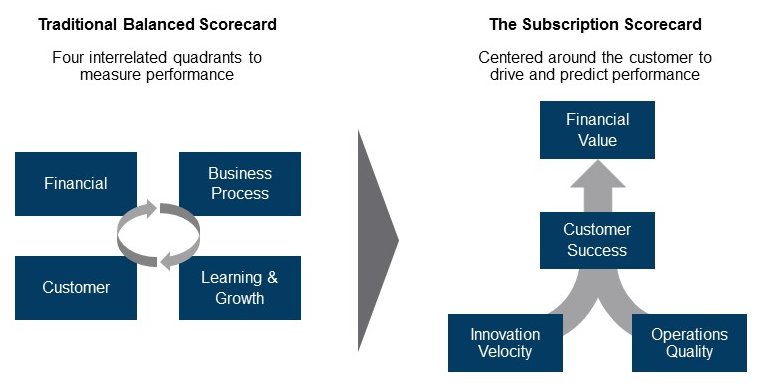
New metrics for the subscription scorecard
The metrics within each of the four subscription scorecard categories will vary based on the company’s strategy, priorities and starting point. However, through our client casework and research, we advise that most of the following metrics should be used to manage and predict performance in a SaaS world.
Financial value
The financial value category measures the economic value of a subscription model and needs to consider customer adoption, growth rate, operating margin and cash flow over multiple years.
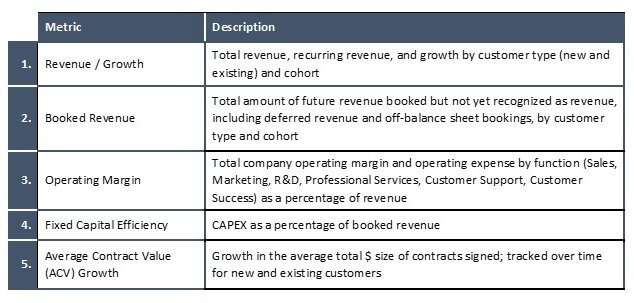
Customer success
Customer success is measured on a more granular basis beyond simple aggregate customer satisfaction and/or Net Promoter Scores.
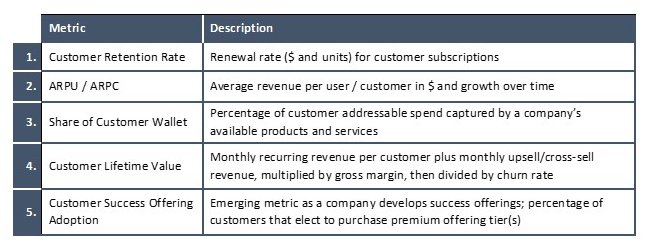
Innovation velocity measures the rate the company delivers new and continuing value to customers.
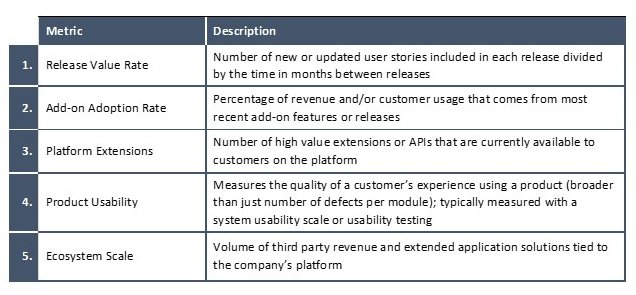
Operations quality
Operations quality metrics are oriented around measuring organizational performance and efficiency and go beyond “table stakes” operating metrics of uptime, support response time and performance against SLAs, etc.
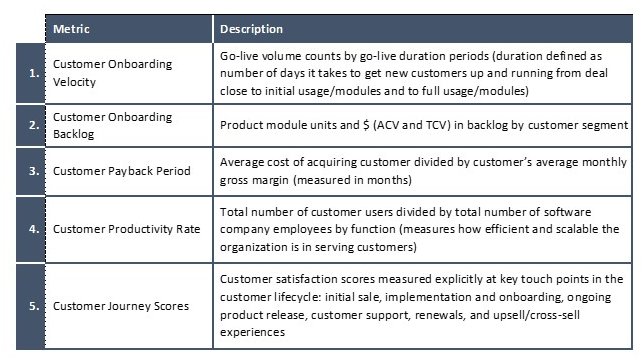
Taking action on the subscription scorecard
Software company executives, whether leading a pure-play SaaS company or migrating the company’s offerings from on-premises to cloud, need to mobilize action around the subscription scorecard. This mobilization varies based on the starting point, but typically entails the following:
- Prioritize and standardize subscription scorecard metrics. Set five priority metrics for each of the four scorecard categories with clear definitions based on the company’s strategy, priorities and key initiatives.
- Retool business reporting and analytics approach. Establish a subscription analytics group that sets and drives system priorities, determines data and measurement approach, provides data visualization and reporting cadence and manages ongoing business user requirements.
- Leverage the subscription scorecard to manage and predict performance. Progressively embed the subscription scorecard into planning, budgeting and operating performance management. Operationally, the subscription scorecard should be used to foresee and head off retention issues, anticipate future customer product needs and identify customers that represent high probability upsell/cross-sell opportunities. Strategically, the subscription scorecard should strive to establish correlations between the different subscription scorecard categories (e.g., correlation between customer success metrics and financial value metrics, operations quality metrics and customer success metrics, and/or innovation velocity metrics and customer success metrics).
Regardless of whether a software company needs to build an analytics-based management approach or is already collecting data and needs to extract value from it, the subscription scorecard is an organizing framework that can be leveraged to great effect in maximizing customer success and driving corporate value. With software leading the way, more and more industries are embracing the subscription model and propelling the overall rise of the subscription economy. Given its broad applicability to this movement, the subscription scorecard and its emphasis on customer success will be relevant for many years to come.
Mark Hauser is managing director and founder of Waterstone Management Group LLC. He has extensive market and operating experience in the technology industry and related business services on a global basis. Mark specializes in operations strategy and improvement, and corporate development in the software and services segment within the technology industry. Contact him at mhauser@waterstonegroup.com.
Andrew Loulousis, manager at Waterstone, also contributed to this article. Andrew advises clients on a number of key strategic issues including growth planning, operations improvement, outsourcing, new product design and launch, customer success strategy and design and acquisition diligence. Contact him at aloulousis@waterstonegroup.com.
